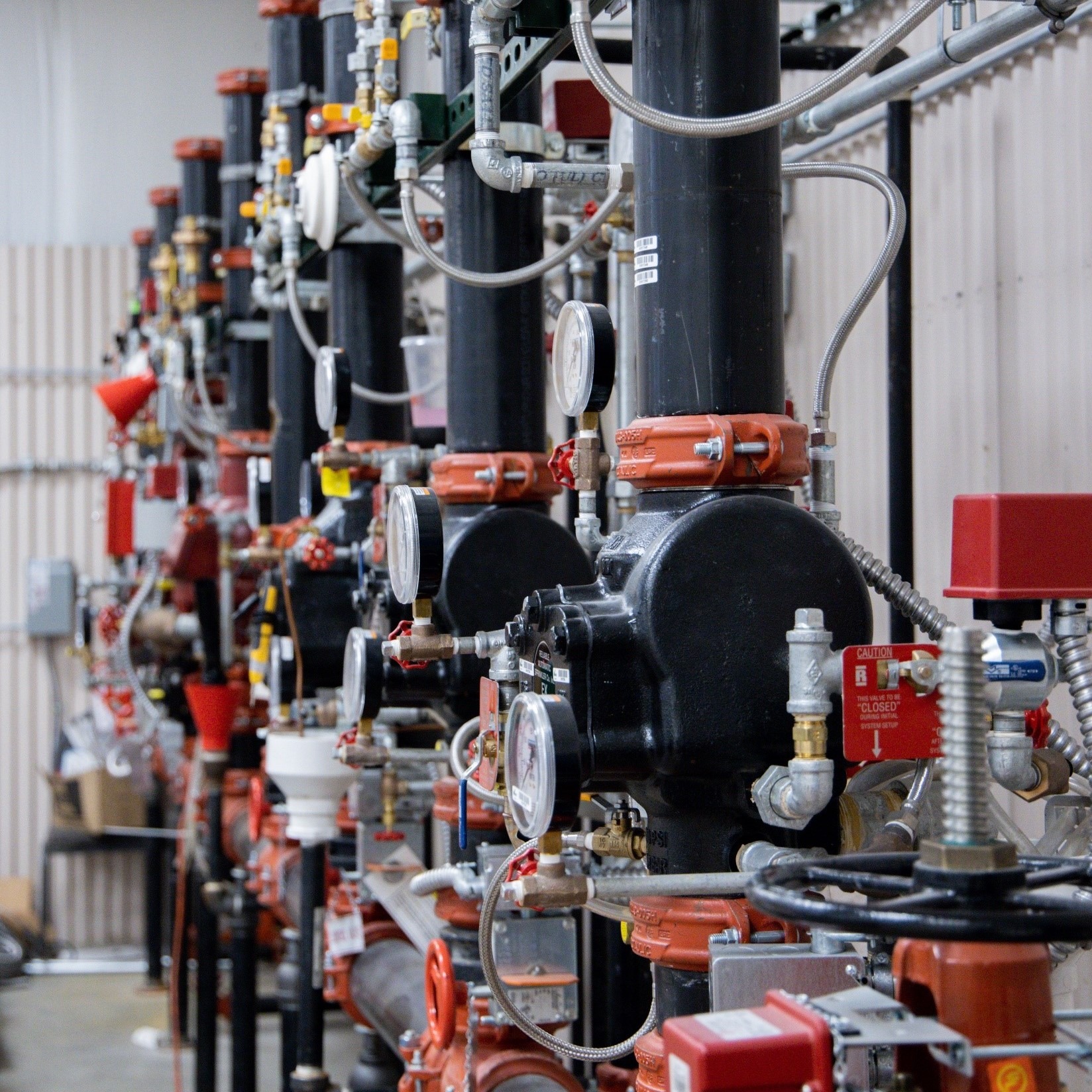
Wet vs. Dry Fire Sprinkler System
One of the most important ways to make sure that your facility is protected is to have the proper sprinkler system that is designed to meet the needs of your application. Two common sprinkler systems that are installed in properties are wet pipe and dry pipe sprinkler systems.
Wet Pipe Sprinklers
Wet pipe sprinkler systems are the most common form of fire sprinkler. This is the traditional type of fire sprinkler where the sprinkler pipes are filled with pressurized water that will immediately discharge when a fire occurs.
Pros:
- Simplest form of fire sprinkler
- Easier to maintain
- Easy to install
- Highly effective
Cons:
- May freeze in in colder temperatures
- A leak in pipe could cause water damage
Dry Pipe Sprinklers
Dry pipe sprinkler systems are filled with pressurized air or nitrogen instead of water to prevent frozen and burst sprinkler pipes in areas with colder temperatures. The pressurized air in the sprinkler pipes prevents water from entering the pipes. When a fire is detected, the air pressure in the pipes is reduced and a valve opens to allow water to flow into the sprinkler pipes and extinguish the fire.
Pros:
- Will not freeze in cold temperatures
- Can be installed in addition to a wet system to protect colder environments
Cons:
- More difficult to maintain
- More expensive to install
- Slightly longer response time during a fire
Install a Fire Sprinkler System with WSFP
Are you interested in installing a sprinkler system with Western States Fire Protection? We provide sprinkler design and installation for both wet and dry sprinkler systems. We can help you choose the right system to protect your cold, unheated facility. An automatic dry pipe sprinkler system may be the best solution for your fire protection needs. Western States also provides inspections, testing and repairs for all types of fire sprinklers. WSFP has experience working with commercial, industrial, and residential applications. Contact us today to learn more about our fire sprinkler services.